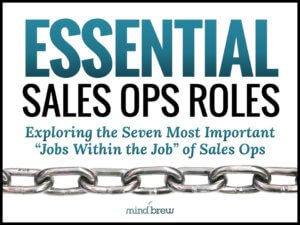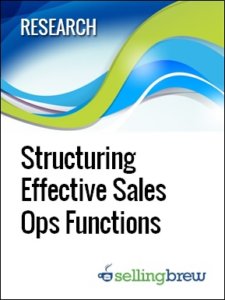During a webinar for Playbook subscribers—The Realities of Account-Based Marketing and Sales—we ran past the hour (again) and weren’t able to get to every question submitted in the live session. Of course, we always follow-up with answers via email, but I thought one of the questions warranted broader exposure:
Our sales operation has been pursuing named accounts for years. Is ABM just about getting marketing onboard with that approach, too? And if that’s the case, isn’t this more marketing’s problem than ours?
There are really two different questions here, so let’s tackle them one at a time…
In many B2B companies, there is indeed a big disconnect between sales and marketing. The sales team may be focusing all of their energies on a “knockdown list” of specific accounts that are identified by name. At the same time, the marketing team may be focusing all of their resources and tools on whole industries, entire vertical markets, and/or broad prospect segments.
Of course, this massive disparity in approaches is incredibly wasteful and inefficient. And in these cases, yes, the account-based marketing (ABM) concept may be just the ticket for getting marketing and sales aligned around a common list of important accounts.
But even where the sales team has been working some sort of target list all along, it would be a mistake to conclude that it’s marketing’s problem, and they just need to get onboard and provide support for whatever sales is already doing.
Here’s why…
As we discussed at length in the webinar, for truly effective account-based marketing and sales, the list is THE thing. The list of accounts that sales and marketing are aligning all of their efforts around is THE critical linchpin of the entire approach. It’s really pretty simple…if you start with a poorly defined list of target accounts and contacts, then you’re destined to generate poor results.
And to be blunt, the typical knockdown list generated by sales will usually fall squarely into that “poorly defined” bucket. Therefore, it should not be used as the basis for any sort of account-based marketing and sales program.
So, if it’s appropriate for your particular market, you should absolutely strive to have your sales and marketing teams both using an account-based approach.
But once that commitment to align around a common list of accounts is achieved, sales and marketing then need to work together to actually define that list. Instead of simply adopting some poorly defined knockdown list already in use, sales and marketing need to leverage all of the knowledge, research, data, and experience they can jointly muster to develop the most effective list possible.
Now…who’s going to drive that effort? Who’s going to facilitate those alignments? Who’s going to be the glue that binds everything together? And once it’s up and running, who’s going to ensure that the whole machine is running at peak performance?
Who’s in the ideal position to make all of this happen? Sales Ops, of course.











